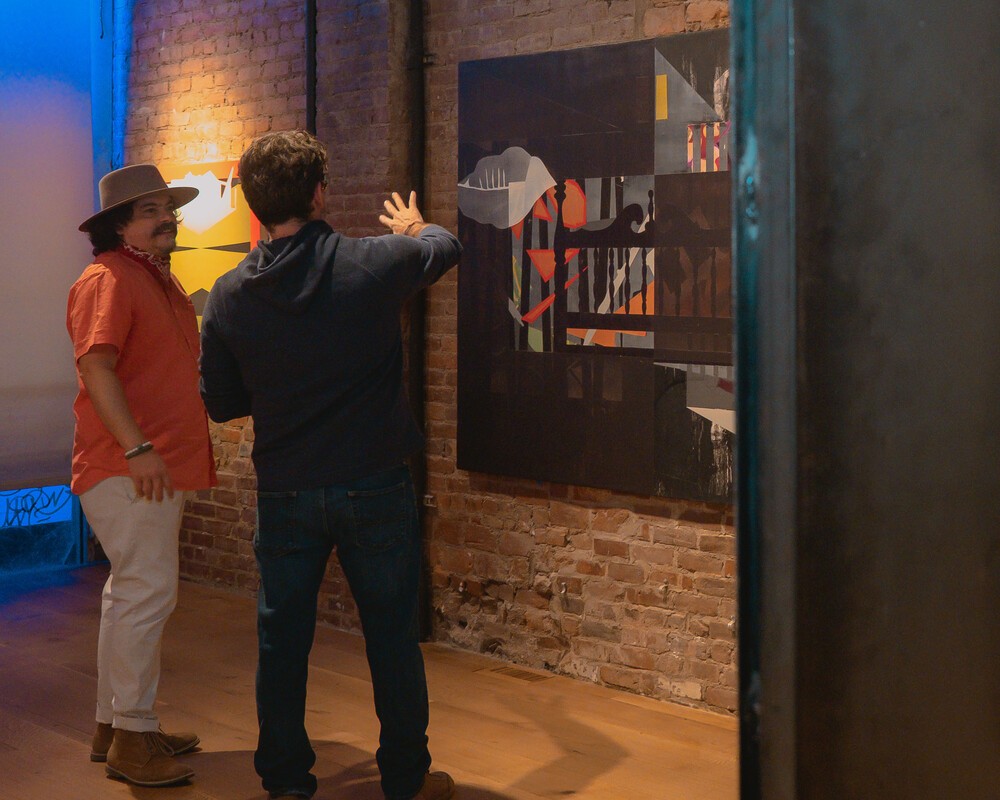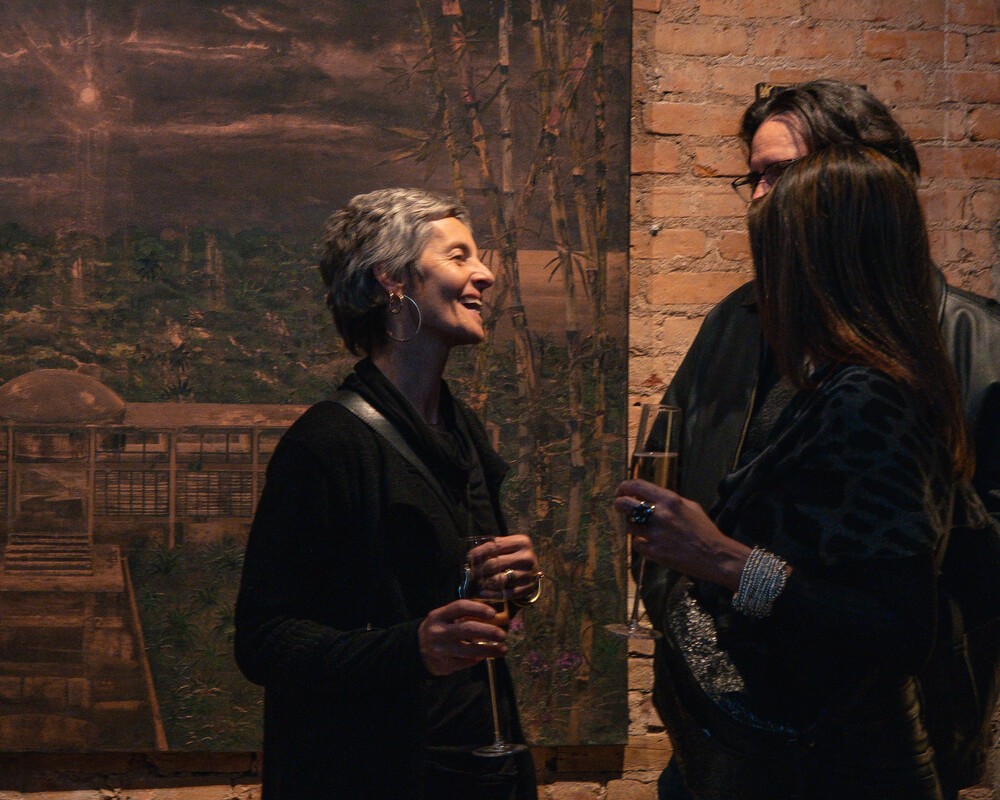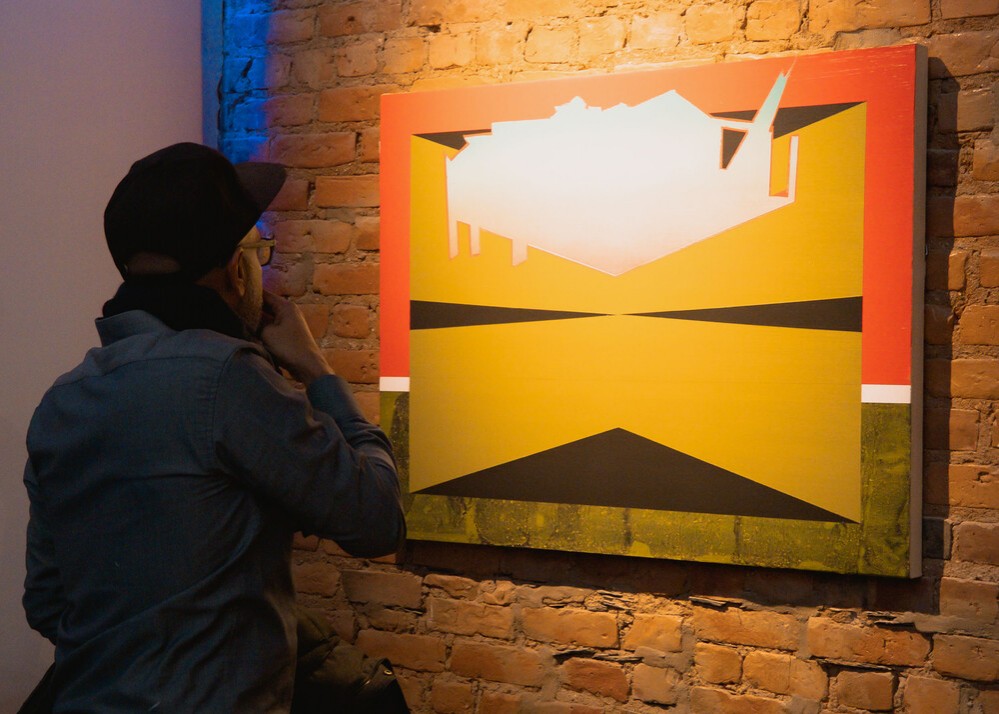ON Sight at 7Lispenard
An opening art exhibition at 7Lispenard.
It is with great honor to discuss the work of four contemporary Puerto Rican painters on display at 7 Lispenard Street in Tribeca, NYC.
Rogelio Báez Vega, Nora Nieves, Livia Ortíz, and Efrén Candelaria—all in full control of their craft, are collectively creating a conversation of what it means to paint today, in a climate where painting challenges itself as an expressive medium of the inner soul, the dream-state, where the surface of the canvas is but a deep cavern of placemaking shadows of our mind’s eye.

In order to view the paintings in the context from which they emerged, please consider this introductory statement from the artists:
“I think one of the strong connections in our works is the presence of the past in the paintings."
In the historic past, the works of the founders of Puerto Rican painting, Jose Campeche (1751-1809) and Francisco Oller (1833-1917) project a world through the lens of what it means to be part of an island community. In the colonial era of Campeche, a classical portrait painter of Afro-Caribbean descent, we usually get glimpses of the island landscape out of the corner of a window adjacent to the protagonist. It is an island of order, calm and clear under authoritarian rule, be it church or state. One hundred years later, Oller, who widely traveled in France and Spain, brings the impressionist palette to his island landscapes of Sugar Plantations and native Royal Palm trees woven together with cumulus clouds and white-hot sun.

One hundred years of solitude after Oller, the past, through the lens of four deeply thoughtful and talented painters, emerges from the tropical depths in this exhibition of post Hurricane Maria paintings. The issues are: a fragmented survival, nature taking over, of darkness (interior and exterior). The through line in their collective work is anticipated decomposition with bursts of light toward an uncertain future.
Another through line is a response to architecture, whether it be iconic or vernacular. In Rogelio's paintings, the window view of modernist institutional places has a feeling of belonging to a past era or maybe a look into the future of a dystopian landscape. He renders buildings in wax and gold, landscapes in layers of printed tropical foliage, dense with color and feeling. Nature is on course to take over the place as soon as you walk out the door.

In Efren's paintings the past comes as light flashes of disjointed memories, bringing multiple places and objects that feels as if they have multiple origins anchored in the artist point of view proposing a new narrative, like a new home that is held by the displaced memories. The house is torn apart, the roof long gone, but the whirl of light in the air brings us to a better place.
In Nora's paintings, the past comes through as fragments of ornamental architectural details and motifs that come together in the work like a collage, creating a new disjointed narrative of the reminiscence of multiple places. These details float in the rubbing surface that looks like a blueprint, proposing the plan of a new place. The quarter half-moon shape that is repeated multiple times in the paintings makes reference to the shape that represents a door placement in an architectural blueprint, the chains by the sides of the paintings emphasize the importance of the ornamentation in a place, making the paintings to suggest the idea of portraits, as the chains are like their earrings, portraits of a place.
In Livia's paintings abstracts the past into the present. Her painting textures feel like the reminiscence of other paintings that have been attached and ripped apart or scratched. The organic shapes move around in the colored plexiglass evoking cast shadows from a space.
Memories are blurred, edited, blocked, and sometimes even invented. For me, the show explores the idea of how memories of a place can be reimagined or remembered. How much we want to remember, how editing these memories can be a survival coping mechanism, how important is also the possibility of forgetting or not remembering.
When I look at Rogelio's paintings it reminds me of an era of a PR that was looking into a prosperous future full of idealism and hope, in some way PR was looking into the "American Dream" that for Puerto Ricans was the "Puerto Rican Dream". His dark toned color palette depicts these landscapes in an obscure light, away from the bright Caribbean paradise idealized colors, as if the vibrancy of the hue vanished away, suggesting as if the Puerto Rican Dream changed, disappeared; or you just woke up from the dream. In this way I feel all their work on view in a dozen paintings, suggest new invented memories.
